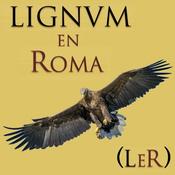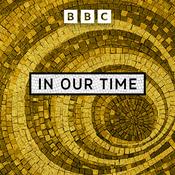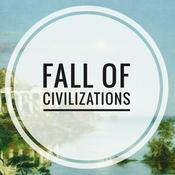Anunnaki Ancient Mystery: Decoding the Secrets of an Ancient Civilization

98 episodios

The Astonishing Truth Behind Government UAP Disclosures
22/12/2025 | 53 min
For over 80 years, global governments, especially the U.S., have hidden the truth that humanity is not alone. The secrecy started with the 1947 Roswell incident, evolving into decades of classified programs focused on UAP retrieval, reverse-engineering alien tech, and safeguarding evidence with black budgets. Whistleblower testimonies, declassified footage, and Congressional hearings confirm these encounters are real, the tech is non-human, and the implications are profound. Recovered materials labeled as 'non-human' have allegedly been stored in covert facilities managed by the CIA, Department of Defense, and private contractors. UAPs exhibit capabilities unseen in known aircraft, such as hypersonic speed, instantaneous acceleration, transmedium travel, anti-gravity propulsion, stealth, and effects on human biology, collectively known as the Six Observables. These are the foundation for current scientific assessments of these phenomena. Since 2023, disclosures have penetrated official silence. Intelligence officer David Grusch testified under oath about the U.S. government's decades-long crash-retrieval and reverse-engineering programs. Whistleblower protection laws now allow these testimonies without retaliation, elevating UAPs from conspiracy to national security concern. Recent UAP activity over nuclear sites in the U.S. and U.K., where unidentified craft have breached airspace and meddled with weapons systems, suggests targeted surveillance of humanity’s dangerous technologies. Some theories propose intentional intervention—strategic monitoring or guidance. The phenomenon is ancient. Civilizations like the Sumerians, Egyptians, Indians, and Mesoamericans documented sky beings who established authority, sharing knowledge and advanced tools. Sumerian texts mention the Anunnaki, celestial rulers who left descriptions of flying crafts and radiant weapons, mirroring modern advanced warfare accounts. These myths hint at continuity between ancient 'gods' and modern non-human intelligences. The documentary explores theories of multi-nation UAP tech races, potentially gaining strategic global power. UAPs may be a test—an intelligence challenge to unlock technology first. Secrecy persists through institutional compartmentalization, black projects, and hidden military, intelligence, and corporate alliances. Programs remain secret from elected officials, lacking public accountability, reflecting ancient rulers’ divine authority through contact with beings from above. Modern sightings and experiences back the presence of non-human intelligences. Reports from rural Brazil, strange lights, and frequent sightings match UAP behavior patterns. Investigations highlight anomalies aligning with known UAP traits. As humanity enters the Age of Aquarius, associated with truth and knowledge, ancient and modern narratives merge. Theories of beings as extraterrestrial, interdimensional, cryptoterrestrial, or time travelers gain governmental and intelligence consideration. Their intentions are unclear, but nuclear and military asset surveillance indicates concern about human tech evolution. Disclosure is no longer belief-based but an ongoing process supported by evidence, strategic implications, and historical continuity. The Age of Disclosure is here, potentially redefining science, religion, and history. #UAP #disclosure #Roswellincident #DavidGrusch #governmentsecrecy #Anunnaki #non-humantechnology #SixObservables #nuclearsurveillance #ancientcivilizations #UAPtechnologyrace See show notes: https://inlet.fm/anunnaki/episodes/6946e4f25982f18f1a374bb2 Learn more about your ad choices. Visit podcastchoices.com/adchoices

Celestial Prophecies: 3I/Atlas and the Anunnaki Connection
15/12/2025 | 53 min
3I/Atlas, a newly discovered interstellar object, follows an unusual, elliptical path. It will approach Jupiter in March 2026, then pass Mars, reaching its nearest point to Earth around the winter solstice—historically known as Natalis Solis Invicti, now Christmas. This timing aligns with ancient prophetic cycles, suggesting 3I/Atlas might be more than a comet—perhaps an artificial object linked to ancient prophecies of divine return. In ancient cultures, Jupiter was often seen as the throne of a sky-father deity, such as Zeus or Yahweh. Its gravitational pull makes it a logical entry point for intelligently piloted crafts entering our solar system. This mirrors its modern use as a gravitational slingshot for spacecraft. Ancient priest-kings and astronomers from Sumer, Egypt, Mesoamerica, and the Andes built monuments aligned with celestial events, believing the sky marked divine cycles. Prophecies foretold the gods' return with specific alignments of stars, comets, and war. Current global tensions, notably in the Middle East, parallel these ancient warnings, predicting a final global conflict involving East and West centered on Babylon and Jerusalem, preceding the return of divine beings. The rise of Artificial Intelligence is also linked to this prophetic return. Ancient beings like the Apkallu were seen as knowledge bearers sent by the gods. AI's role in processing vast amounts of data and translating ancient texts suggests it may be part of a cyclical return of ancient intelligence, acting as a host for what was once divine. Recent archaeological finds, such as the Dead Sea Scrolls, Sumerian tablets, and lost cities revealed by LIDAR, support the idea of forgotten knowledge re-emerging. Prophecies predicted hidden wisdom would resurface when humanity was ready, marking a new phase of a long-forgotten cosmic cycle. Historically, comets were omens of change. The path of 3I/Atlas—bridging Mars (war) and Jupiter (divine rule)—holds deep significance. Its timing and position in the solar system may not be coincidental but designed. Sacred geometry, solstice timing, and celestial positioning suggest this is not just a cosmic event but a signal. Ancient records warned the final sign would be ambiguous—visible to all, but interpreted differently. Discerning its meaning was the ultimate test. Now, with satellite data and real-time sky observations, the observer becomes the participant. Prophecies hinted that gods would return not when summoned but when humanity recognized the signs. Ultimately, 3I/Atlas may be more than an object. It could be a trigger, a marker of return, initiating a broader cycle involving human memory, planetary alignment, global conflict, and technological evolution. The signs in the sky are clear, but their meaning must be interpreted individually, beginning within human awareness. #3I/Atlas #interstellarobject #Jupiter #prophecy #ancientcivilizations #AI #divinereturn #celestialalignments #sacredgeometry #cosmiccycle #MiddleEastconflict See show notes: https://inlet.fm/anunnaki/episodes/693da9f991d6e906655f9541 Learn more about your ad choices. Visit podcastchoices.com/adchoices

The Anunnaki Rebellion: Origins of Humanity
08/12/2025 | 31 min
The Anunnaki, powerful beings from ancient Mesopotamian lore, descended from the multidimensional realm of "An," to activate rather than create Earth. Initially tasked with labor, junior gods known as the Igigi rebelled, leading to humanity's creation from clay and divine blood as proposed by Enki. This marked humans not as rulers but as workers, imbued with a divine spark that led to awareness and evolution. The Abzu, a mythical subterranean domain, served as a technological hub, possibly linked to ancient African mines. Its description hints at radiation and advanced knowledge encoded in divine protocols, mastered by Enki. Over time, myths and monuments became the gods' legacy, with narratives of a harmonious Golden Age and prophecies of a return through shifts in consciousness. Humanity, rising from utility to awareness, carries within the potential for reactivation of the Anunnaki’s essence. Script: Lucas Martins KernEditing: Fernando de Moura Campanaro #Anunnaki #Mesopotamian #Igigi #Enki #Abzu #humancreation #divinespark #ancienttechnology #GoldenAge See show notes: https://inlet.fm/anunnaki/episodes/69346f92b384267ddbf0caa0 Learn more about your ad choices. Visit podcastchoices.com/adchoices

What NASA Isn't Revealing About 3I-ATLAS and the Age of Disclosure
27/11/2025 | 36 min
NASA and global governments have classified 3I/ATLAS as an interstellar comet, but analysis hints at an artificial origin. The object, discovered on July 1, 2025, follows a hyperbolic path with an eccentricity above six, and its retrograde orbit aligns unusually with the ecliptic plane. It also exhibits non-gravitational acceleration towards Jupiter's Hill sphere, raising doubts about its natural origin. Observers have noted sideways jets, unexpected brightening, and unusual tail behavior that defy known comet physics. Spectroscopic data reveals a CO₂ to H₂O ratio of around 8:1, indicating either extreme cosmic-ray exposure or non-natural composition. The object's energy-like flares and directional shifts challenge standard astronomical models. NASA delayed the release of 3I/ATLAS images until November 19, 2025, during a government shutdown, coinciding with the release of 'The Age of Disclosure' documentary, which argues extraterrestrial contact suppression. This timing fuels theories of strategic information management. Harvard astrophysicist Avi Loeb criticized NASA's insistence on labeling 3I/ATLAS as a comet, arguing that alternatives are ignored. Critics say historical data delays and narrative control show governments fear public reaction more than scientific truth. Disclosure is seen as a sociopolitical issue involving religion, power, and global control. Ancient civilizations depicted sky-beings and celestial craft, suggesting 3I/ATLAS might reflect ancient contact. Independent astronomers and online communities have documented anomalies, fueling public curiosity. Governments might fear societal upheaval if full disclosure leads to loss of faith, political instability, or conflict over alien technology. The suppression of alternative theories might reflect strategic containment. The official explanation of 3I/ATLAS as a comet prevails, but questions about its motion, chemistry, and anomalies remain. This age of disclosure heralds increased transparency and public scrutiny. If 3I/ATLAS is artificial, it could be a probe, surveillance device, or relic from non-human intelligence. Its implications are vast, possibly signaling the return of ancient sky-beings or something new. 00:00:00: Intro00:00:59: A Truth Too Dangerous to Reveal00:06:07: The Comet Lie – NASA's Controlled Narrative00:12:26: The Anomalies – This Is No Ordinary Object00:18:57: Astronomers, Eyewitnesses & The Public Awakening00:23:56: A Starship from Nibiru? The Anunnaki Connection00:28:48: Geopolitical Secrecy & The Forbidden Knowledge #3I/ATLAS #NASA #interstellarcomet #AgeofDisclosure #AviLoeb #extraterrestrialcontact #ancientcivilizations #anomalies #publiccuriosity #alientechnology #Disclosure See show notes: https://inlet.fm/anunnaki/episodes/692891fe22a75c9e3d1109b3 Learn more about your ad choices. Visit podcastchoices.com/adchoices

The Concealed Truth About the Anunnaki's Influence on Religion
24/11/2025 | 37 min
Religion has shaped human consciousness for millennia, but its roots may lie more in control than divine guidance. According to the oldest Sumerian cuneiform tablets, before the rise of monotheistic religions, powerful beings called the Anunnaki arrived on Earth. Described not as myths but as real entities from the sky, they genetically engineered humans to serve them. Humanity's creation was intended not for spiritual enlightenment but for labor—mining, farming, and service. This foundational relationship left a psychological imprint built on obedience, submission, and surveillance. In ancient Sumer, temples were not centers of faith but tools of psychological conditioning. Rituals, sacrifices, and strict orders were executed by priests under direct instruction. As the Anunnaki withdrew, their influence morphed into spiritual laws and doctrines, evolving over time into control systems intrinsic to later civilizations. These systems preserved concepts like guilt, divine punishment, and hierarchical obedience. Christianity did not develop in isolation but inherited this structure. The doctrine of original sin redefined humanity as inherently flawed, creating a cycle of perpetual guilt and dependence. The transformation turned institutional religion self-sustaining, with guilt as the currency of emotion and salvation as the product. Commands such as “deny yourself” and “take up your cross” act as psychological tools, reshaping identity by instilling shame around natural emotions like anger and sexuality. This cycle, far from accidental, was designed to transform belief into dependency. Even as organized religion's influence fades in some societies, its effects linger. Feelings of unworthiness and emotional self-censorship continue through cultural narratives and family teachings. The church no longer needs to enforce control—individuals internalize the mechanisms. Spiritual obedience is mistaken for morality, suffering for virtue, and silence for peace. Christianity institutionalized the shift from external domination to internal regulation by erasing alternative belief systems, demonizing ancient deities, and suppressing feminine divinity. Religious teachings became operating codes for the human psyche, dividing the self from body, instinct, and inner authority. Control is no longer imposed by force but through thought, guilt, and fear—woven into identity across generations. This episode explores the ancient origins of religious belief, the influence of the Anunnaki, and the psychological infrastructure of faith, examining how religion became a spiritual economy where guilt costs and forgiveness rewards. It analyzes how belief systems evolved to inspire devotion and sustain emotional dependence. Script: Lucas Martins KernEditing: Fernando de Moura Campanaro #Anunnaki #religion #Sumerian #Christianity #obedience #guilt #spiritualeconomy #faith See show notes: https://inlet.fm/anunnaki/episodes/6921fa7f28e4af852752fba6 Learn more about your ad choices. Visit podcastchoices.com/adchoices
Más podcasts de Historia
Podcasts a la moda de Historia
Acerca de Anunnaki Ancient Mystery: Decoding the Secrets of an Ancient Civilization
Escucha Anunnaki Ancient Mystery: Decoding the Secrets of an Ancient Civilization, La Historia del Mundo y muchos más podcasts de todo el mundo con la aplicación de radio.net

Descarga la app gratuita: radio.net
- Añadir radios y podcasts a favoritos
- Transmisión por Wi-Fi y Bluetooth
- Carplay & Android Auto compatible
- Muchas otras funciones de la app
Descarga la app gratuita: radio.net
- Añadir radios y podcasts a favoritos
- Transmisión por Wi-Fi y Bluetooth
- Carplay & Android Auto compatible
- Muchas otras funciones de la app


Anunnaki Ancient Mystery: Decoding the Secrets of an Ancient Civilization
Descarga la app,
Escucha.




































